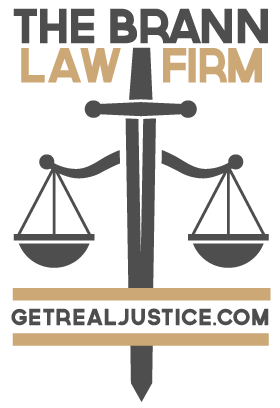Premises liability is type of claim when you have been injured on someone else’s property.
The injury may occur through a slip and fall on a wet substance or due to an unmarked change in elevation, or a crack in a floor or sidewalk or a painted flooring surface. Typical injuries may include a broken a knee, ankle, or shoulder or a sustained a head injury.
Texas courts distinguish the status of the person injured. You can be an invitee, a licensee or a trespasser when you’re on someone else’s premises. The highest duty of care is owed to an invitee.
It is important to note however that no premises occupier or owner or the person responsible for the condition of the premise is an insurer or guarantor of your safety when you’re on their premises.
Generally, a premises liability claim is an ordinary negligence claim; however, there are very distinct elements that have to be established before there can be a recovery or monetary award. These elements pose some very unique challenges for the injured individual and the attorney that represents them and can be one of the most difficult types of claims to recover on in Texas.
If you’ve been injured due to the condition of someone else’s premises, the necessary elements to establish are: (1) there is a condition on the premises that posed an unreasonable risk of harm; and (2) the owner or person responsible for the premises knew or reasonably should have known of the conditions that posed the unreasonable risk or danger; and (3) the owner or person responsible for the premises failed to adequately warn you of the condition of the premises or failed to make the condition reasonably safe for your use.
There are many unsafe conditions that may pose “an unreasonable risk” such as a foreign substance on the floor, a hole, a crack, a crumbling stair, a stairwell that gives away, or an unguarded opening.
Many conditions exist which may be unsafe yet will do not pose a legally “unreasonable” risk of harm. For instance, the Supreme Court of Texas has held that some conditions that naturally occur do not constitute an unreasonable risk of harm including snow, natural ice accumulation or mud following a rain.
However, proof of a unreasonable risk or general defective condition of the premises will normally not be enough by itself for an injured party to prevail on a claim.
The Texas Supreme Court has held that it is not sufficient to merely establish the condition of the premises was one of disrepair, but rather the injured party must establish that the owner or occupier of the premises knew (had “direct knowledge”) or should have known (had “constructive knowledge”) of the very defective condition that injured individual is complaining caused the injury.
This can be a very difficult burden as defective conditions can arise at any time.
In grocery stores, large box type department stores and hardware stores, shoppers quite often create a dangerous condition by dropping liquids, drinks, nails for example. If that condition causes you an injury, the existence of the hazard is not sufficient to place liability on the owner or occupier of the store or business. You must establish that the store (the owner or occupier) had either direct knowledge of the existence of that condition or it had existed on the floor long enough that they should have discovered it and taken appropriate action to protect you or warn you of that condition.
Many stores have in place policies and procedures where floors and aisles are to be checked every so often and those logs can be very helpful establishing their liability or their defense.
I have represented the injured party in many different types of premises liability claims. I have learned that it is quite often the position of the person responsible for the condition of the premises that they did not know (or they deny knowing) that the condition that caused the injury existed, although the condition was clear, open and obvious.
Once the party responsible for the premises denies actual knowledge, you must, in order to prevail, establish their constructive knowledge of the condition. That is, you must prove that they should have known about the the condition because it existed for such a period of time that it should have been discovered.
Establishing constructive knowledge poses a challenge of its own in a premises liability claim.
The need to preserve evidence if you’ve been injured on someone’s property is paramount to the success of your claim. Pictures or other evidence of the dangerous condition that caused the injured are necessary before the condition is changed or removed. Video surveillance evidence must be preserved and can be vital to establish the nature of the condition and the length of time that it had existed before the injury.
Many times, in order to establish the liability of the owner or occupier of the premises it is necessary to hire an expert to review the premises, and ascertain the various violations of local, county, state or uniform building codes.
Your status on the premises is also important to the claim and your ability to recover damages. You may be an invitee, a licensee or a trespasser.
An invitee is a person who enters the premises with the owner’s or occupier’s express or implied knowledge and permission and generally for the mutual benefit of both parties. An invitee is owed the highest degree of care.
A licensee is a person who enters the property with the owner’s or occupier’s implied permission not for the mutual benefit of the parties but for the benefit of that person or their business or for someone other than the possessor or occupier of the premises.
A trespasser is a person who enters the premises without lawful right or the consent of the owner or the possessor but merely for the trespasser’s own purposes.
While judging the responsibility of the owner or occupier of the premises where injury has occurred, the concept of “comparative responsibility” or “comparative negligence” will also be assessed as part of the premises liability claim. That is, the actions or knowledge of the person injured will also be judged. If you encountered an unreasonable dangerous condition knowingly and failed to take reasonable precautions for your own safety, you may be held partially or fully responsible for the injury.
In addition to the condition of the premises causing harm, you may also be injured because of a negligent activity being conducted on the premises. A negligent activity is distinguished from a hazardous condition of the premises. To have a negligent activity claim you must have been injured by some ongoing negligent activity and not as a result of a condition that was created by the negligent activity.
To ascertain what legal rights you have after being injured on someone’s property, an early investigation of the incident can be vital. It is important to preserve evidence. It is important to understand your status on the premises and to determine whether the injury was as result of a condition of the premises or a ongoing negligent activity on the premises. Further, it is critical to understand who the responsible party is for the condition and maintenance of the premises and what they knew or should have known about the hazard that led to your injury.
To have the best chance prevailing in a premises liability claim and recovering money for injuries, you need experienced legal representation.
Scott Brann of The Brann Law Firm has handled many premises liability cases over the past 28 years representing the injured parties. He has recently handled claims against apartment owners building their own ramps, by hotels not maintaining and properly marking changes in elevation, by the crumbling condition of sidewalks and by water on the floors in the produce sections of grocery stores.
If you have been injured on someone property please contact us to let us know if we can be of service to you.

